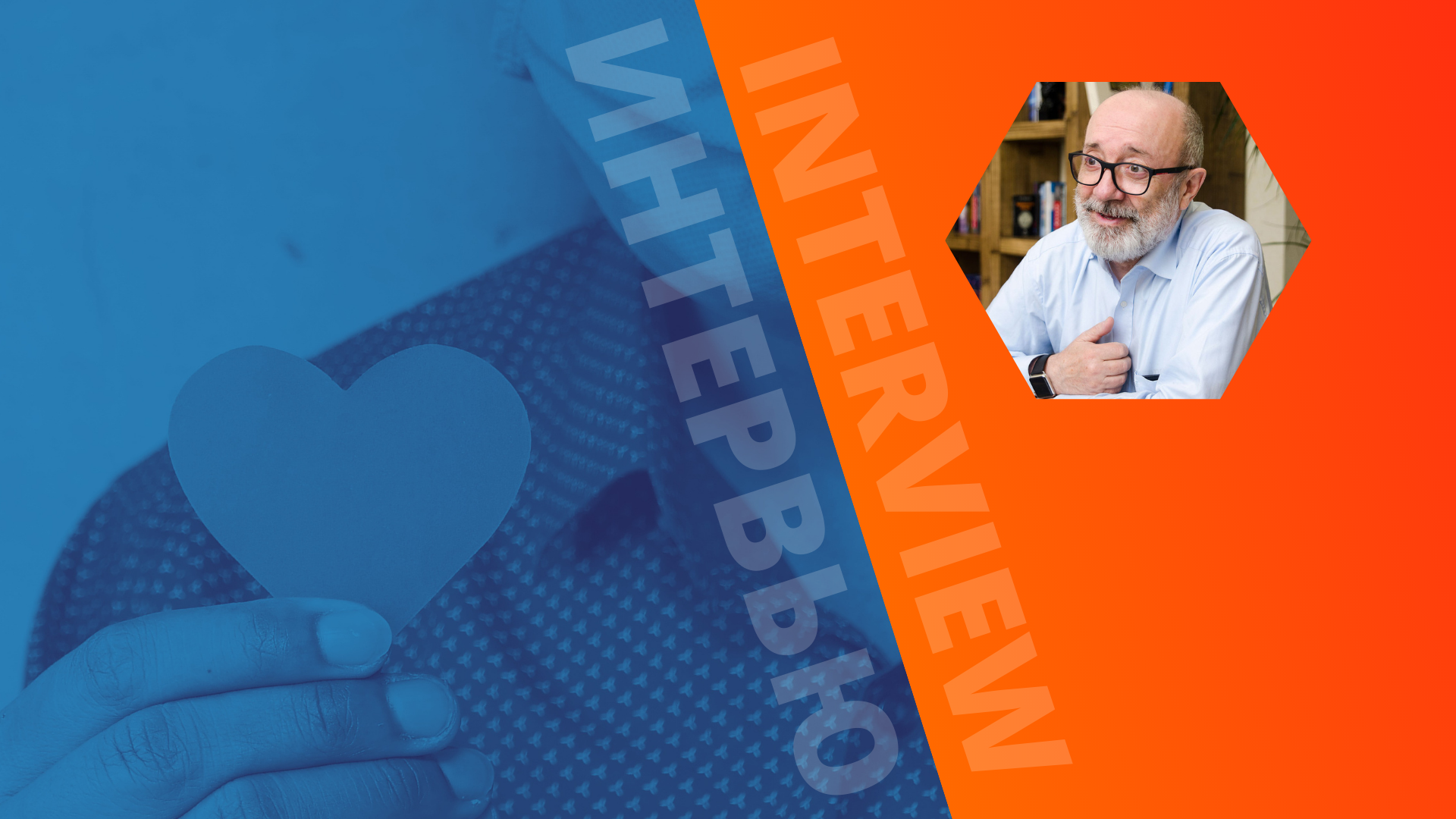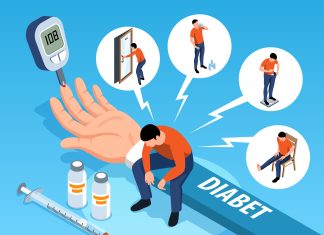Infrastructural support for clinics is one of the most promising areas of modern charity. The pioneer of this direction was Rusfond, one of the largest Russian charitable foundations, founded in 1996.
Lev Ambinder, Rusfond’s founder and president, explains how the role of charity in the healthcare system is changing, why partner hospitals are needed and how benefactors help develop new technologies in healthcare.
The one who plans is able to control
Initially we proceeded from the assumption that we shouldn’t publish all the letters because our readers will not donate more than a certain amount — they simply do not have so much money. And there are not enough pages in Kommersant to publish all requests. But we figured out how to collect more: companies can provide funds too.
For a long time we didn’t know exactly how much money we were going to raise. The necessary amount was donated, and that was good enough. After the currency crisis of 1998, I was approached by Judith Ingram, a correspondent of United Press International, who said: “It is believed that the crisis has left Russia without its middle class. Have the amounts you raise fallen down?” And I couldn’t give her an answer. I just noticed that enough money was raised for one child, and it meant that we could publish the next letter. She offered to calculate the amounts of donations that we were receiving herself. A week later, she came back with the calculation: in dollars, the amounts of the money raised increased, despite the fact that the dollar exchange rate had more than quadrupled. So I understood that it is necessary to analyse how much we raise!
In 2003, I talked about our experience at a conference dedicated to charity. “In 2002,” I said, “we raised 760,000 dollars, and that is our limit.” To which Stephen Solnik, head of the Moscow representative office of the Ford Foundation, asked: “Could you raise a million?” And it dawned on me: the program could be planned! It was a discovery for me, I felt my hands trembling. Everything is elementary: if you take things into account and plan, then you manage the situation. I knew where we were losing, and I even knew why. And I planned to raise a million dollars in 2003. Our result was actually 1.2 million .
The total amount raised by Rusfond over 25 years is 17 billion rubles: 16.8 billion that we already received, and another 200 million of donations that we’ll have by the end of 2021. December is the month when we raise most, although it’s also the most unpredictable one.
On average, we raise 25 million rubles a week. Some say: “It is the First Channel that raises the money.” But Rusfond has not partnered with Channel One for 2.5 years, and we manage to raise 1.5 billion rubles annually. We were able to keep our audience and came up with new methods.
Why targeted assistance goes beyond its scope
It is children who we generally help. At first, Kommersant newspaper and Domovoy magazine experimented in raising money for adults, but by 2001 I realized that our heroes are children. We are not a charitable foundation in the literal sense of the word: Rusfond is about publishing letters with comments on the pages of the newspaper. What is important for a newspaper? The growth of its audience. We publish one letter and keep another one in stock. Which one do we publish? The best person for a publication is a blonde girl with curly hair, and the girl has cancer. She’s five and a half years old. Back then, in the noughties, we managed to receive the amount necessary for our heroine before our next publication, and even more than she actually needed, but donations for her continued for another month or two. Therefore, we came up with such an offer: “If you do not object, the surplus donations will go to another patient (and we specified their name)”…
At first, there were some objections, albeit rare. Mostly from women who donated a large amount. As a rule, they were people who donated to a child who was their homie and were unwilling to help anyone else. In such cases, we immediately refunded the money. But we have not had requests for refunds for ten years now.
Why doctors are our best allies
At first, all the letters that we published were checked by officials. Therefore, the publications with requests for help included a letter from a child’s mother, accompanied by our comment based on a check with an official. Then we realized that we shouldn’t do it like that. We may write about a child’s disease, but the mother’s request for help should be commented by a doctor. He tells readers about the child’s needs and, in fact, promises to save the child, as the only thing that they have to get is the necessary amount of money. This seems obvious now, but back then it was an important discovery.
And then it dawned on me: clinics are our partners! After all, doctors already know the child and the problem, so there is no need to check the letter. And it is the clinic and the doctor, who should refer a child’s mother to Rusfond. The partner clinic will immediately solve a lot of problems related to the selection of requests for publications, and the ones published will have balanced perspective and be relevant.
In 1999, I was contacted by Mikhail Mikhailovsky, Head of the Department of Vertebrology at the Novosibirsk Institute of Traumatology and Orthopedics (NIITO) of the Ministry of Health of the Russian Federation. He wanted to install an imported metal structure on a boy’s spine to straighten and support his back once and for all. The structure cost 150,000 rubles. We published a letter with a doctor’s comment, and suddenly 300,000 was donated! I called Mikhailovsky and asked: “Are there any more people in need?” As a result, we agreed that we would publish stories of his patients. One Ural tycoon noticed the fund raising work, began to provide funds, and then his friends joined him, and our project began to accelerate: things were done fast, as if on a conveyor at a factory.
Now we have 80 partner clinics. For example, Moscow city clinics that cater for children from Moscow have spare capacity. Why wouldn’t they take nonresident kids for charity money? We can start with cardiac patients, cardio: heart problems are very common, there are not enough clinics in the regions, and not enough timely state quotas for everyone… Then we began to cooperate with other Moscow hospitals in other areas of medicine. Some of the partners were federal institutions: with Priorov Moscow National Medical Research Center for Traumatology and Orthopedics, we began raising money to pay for the treatment of children with scoliosis.
We are asked: “Why are you raising money for a particular patient?” I answer: “That’s because no one will give money to a clinic, or they’ll give very little.” Why is that? Because people don’t believe. It is because helping a specific person is always transparent: it’s easy to check. And then, it’s the rule of journalism: no matter what problem you write about, start by describing a specific person and provide their first and last name. This way you will have maximum attention.
How charity helps to develop technology
When we developed relationships with partner clinics, I noticed that we were starting to invest not in medicine in general, but in new technologies, their implementation and development. That is, at first it happened by itself. We developed annual plans together with the clinics: the number of children who would be referred to us, the budget, and the clinics calculated the necessary amounts of medicines and the doctors’ salaries. And increasingly more often young doctors became our partners. And then I thought: those are the people who I should rely upon. Their professional needs are innovation-oriented. They already have research degrees, you see eagerness in their eyes, and they are willing to make a change. With their help, we will increase the effectiveness of our readers’ donations and attract new benefactors! And we have succeeded: over 25 years, we have invested 11 out of 17 billion rubles in the introduction of high technologies. And you ask why we have hundreds of thousands of donors, why fifteen hundred companies are willing to help us.
I’ll tell you how I was looking for a clinic with a strong cardiology department for cooperation. I visited seven medical institutions in different cities, the sixth was the Meshalkin National Medical Research Center in Novosibirsk. I phoned them and we arranged a meeting. I arrived there. And they wouldn’t let me in. They changed their mind. We were sitting with our friends in Novosibirsk, and suddenly Mikhail Mikhailovsky asked: “Why don’t you go to Tomsk to do that?” I am not sure about it, the city is not rich. He answered: “What matters more to you, the city’s poverty or its brilliant cardiologists?” In the morning, I was given a lift in an old Russian-made car and arrived in Tomsk. So I found the very partners I have been looking for all my life as a journalist: they are doctors of Tomsk Research Institute of Cardiology of the Siberian Branch of the Russian Academy of Medical Sciences.
They were just perfect: young people, candidates of sciences, knowledgeable, but willing to learn more; just think what they can achieve if they learn from foreign experience and are given the necessary funds! We created a program, and what was the result? The Cardiology Research Institute in Tomsk was for adults, they only operated on up to thirty children a year. They were housed in a three-storey building constructed in the Soviet era, but an 11-storey building, the work on which lasted years and years, was finally completed for them. And they decided to organize a children’s department. I said: “Do you understand what you’re getting into? Do you have pediatric cardiologists and cardiac surgeons?” They had them! They were great and young. We received help from “Russian Gift of Life”, an American charity headed by Orthodox priest Leonid Kishkovsky. A charitable Russian-American treaty was concluded, according to which a team of pediatric surgeons came to Tomsk once a year (the project continued for seven years) and operated on children with the most complex heart defects. And doctors from Tomsk went on internships in American clinics all these years.
The money was also found. It was decided to install state-of-the-art equipment at the children’s operating room. Only the ventilation system for it cost 28 million rubles back then. The governor of the Tomsk region suggested an idea: the regional authorities would provide half of the amount, and the remaining half would come from Rusfond. We wrote that we were raising funds in Kommersant: “It is for the first time that we are asking for equipment.” And then a well-known entrepreneur responded: “Is it true that the governor will invest? It may happen that I’ll give you 14 million, but he won’t keep his word, will he?” I say, “He promised to do that.” But eventually the region did not invest. We eventually raised another 14 million for ventilation systems.
How charity spread to Russia’s regions
In 2007, Tatarstan President Mintimer Shaimiev announced the Year of Charity in the Republic. He gathered the heads of enterprises and, in a manner characteristic of those who were brought up in Soviet times, announced: “Now we will start charity work.” And Tatarstan has a lot of big businesses: oil companies, oil refining, aircraft and automobile manufacturing, etc. The head of every city and every administrative district now had an assistant in charge of charity. It is said that the president once invited representatives of charitable foundations, even tiny ones, and ask: “Why don’t you come to us for money? Why do you raise money independently?” And he began to help, he gave orders to governments of cities and towns.
In 2008, I came to him to talk about another issue and at the same time proposed to create a regional office of Rusfond in Tatarstan. Mintimer Sharipovich asked: “What needs to be done to establish that office?” I answer: “Local television, online newspapers, your wonderful pediatric hospitals.” He wanted to know where young patients came from. I started telling him how we work with clinics… And he said, “Hold on, you’ve been talking too long, where should we transfer the money?” – “This is the account.” – “Great, now go on with your work!” The work got started, and then it went on with a speed of a hurricane. Now the Kazan bureau ranks third in fund raising after the ones in Moscow and St. Petersburg. We have 14 regional bureaus in total.
We never substitute for the state budget — this is our main principle. Kazan republican hospitals, as well as those in Ufa, are as large as Moscow and St. Petersburg city hospitals, and they are not inferior to federal facilities. The equipment and the doctors’ training are at a very high level. Each has its own budget and its own capacities. Unfortunately, there is always less money that is needed for the corresponding capacity, and the demand for medical services is, on the contrary, greater than the capacity. This is the niche that we and our benefactors are trying to fill.





